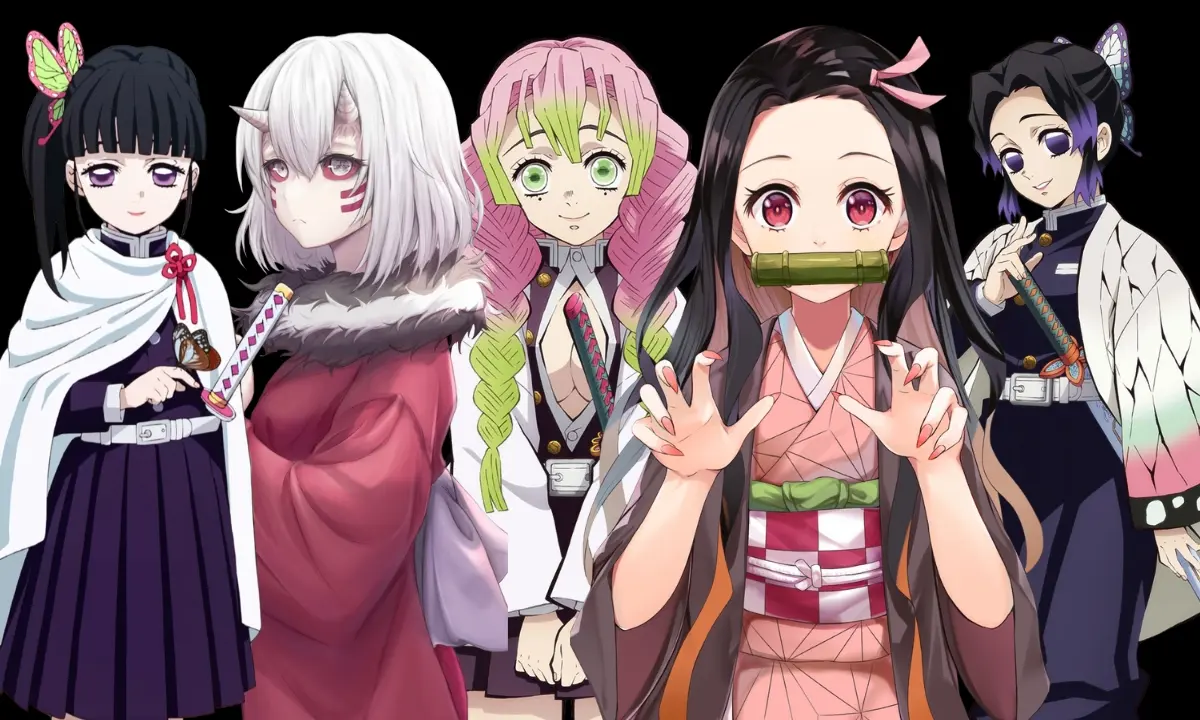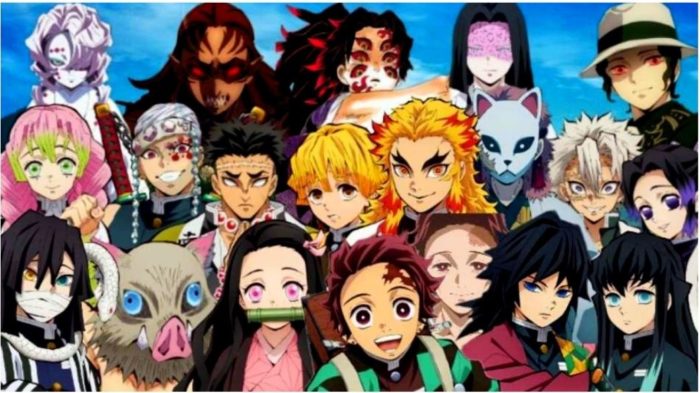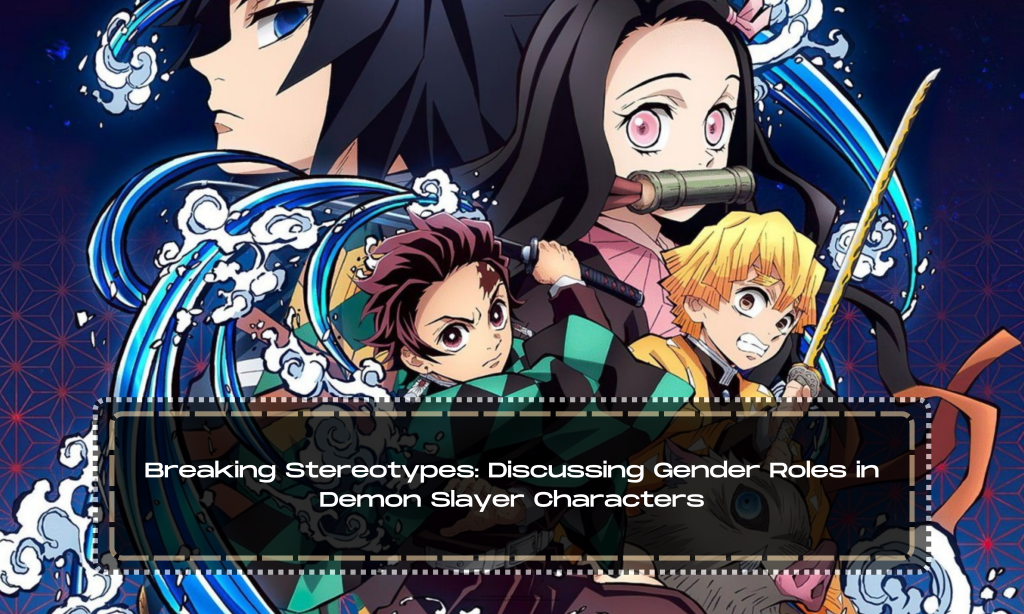Breaking Stereotypes: Discussing Gender Roles in Demon Slayer Characters
Gender has been a recurring theme in anime, and “Demon Slayer: Kimetsu no Yaiba” doesn’t shy away from it either. While the series is primarily known for its stunning animation, heart-wrenching battles, and captivating storyline, it also subtly challenges traditional gender roles through its diverse cast of characters. In this blog, we’ll dive deep into the world of “Demon Slayer” and explore how it breaks down stereotypes surrounding gender roles.

Introduction: The Unseen Battle Beyond Demons
Before we delve into the world of gender roles in “Demon Slayer,” it’s essential to understand the context of the story. The series is set in the Taisho era of Japan and follows Tanjiro Kamado, a kind-hearted boy who becomes a demon slayer after his family is slaughtered by demons. In his journey, he encounters a variety of characters, each with their own unique abilities and personalities.
Chapter 1: The Resilient Women of Demon Slayer

The first aspect of “Demon Slayer” that challenges gender stereotypes is the portrayal of its female characters. Historically, shonen anime and manga have been criticized for their one-dimensional female characters, often relegated to the roles of damsels in distress or mere love interests. “Demon Slayer” flips this script entirely.
- Nezuko Kamado: Tanjiro’s younger sister, Nezuko, is one of the most iconic characters in the series. She undergoes a transformation into a demon but manages to retain her humanity and develop her own unique demon abilities. Nezuko becomes a symbol of resilience and strength as she fights alongside her brother, challenging the notion that female characters can’t be both powerful and complex.
- Kanao Tsuyuri: Another compelling character is Kanao Tsuyuri, a demon slayer who is emotionally reserved but incredibly skilled in combat. Her character subverts the stereotype of women being emotionally driven and incapable of stoicism. Kanao’s dedication to her mission and her mentorship under Shinobu Kocho are testaments to her strength and character development.
- Shinobu Kocho: Speaking of Shinobu Kocho, she’s the Insect Hashira and one of the highest-ranking members of the Demon Slayer Corps. Shinobu’s grace, intelligence, and combat prowess challenge stereotypes about women being physically weaker than men. Her leadership and strategic thinking are essential to the demon slayers’ success.
Chapter 2: The Complexity of Male Characters

While “Demon Slayer” excels in portraying strong female characters, it also dives deep into the complexity of its male characters, debunking stereotypes about masculinity along the way.
- Tanjiro Kamado: Tanjiro is the embodiment of empathy and compassion, qualities that are typically associated with femininity. His sensitivity to others’ pain and his unwavering determination to protect his sister go against the stereotype that male protagonists must be stoic and emotionally distant.
- Zenitsu Agatsuma: Zenitsu, often seen as the comic relief of the series, challenges the notion that male characters must always be brave and heroic. He is riddled with fear and self-doubt, making him a more relatable character for those who don’t fit the mold of the fearless hero.
- Inosuke Hashibira: Inosuke is the wild and untamed member of Tanjiro’s group. His character subverts the idea that men must conform to societal norms of appearance and behavior. Inosuke’s refusal to wear a shirt and his primal instincts challenge the conventional standards of masculinity.
Chapter 3: Bonds Beyond Gender
One of the most significant strengths of “Demon Slayer” is how it emphasizes the importance of human connections beyond gender. The bonds formed between characters transcend traditional gender roles.
- Friendship and camaraderie: The friendships between characters like Tanjiro, Zenitsu, and Inosuke, and their female counterparts, are built on mutual respect and support. These relationships reinforce the idea that meaningful connections can be formed regardless of gender.
- Mentorship: The mentorship dynamic between the Hashira and the younger demon slayers also breaks down gender stereotypes. The female Hashira, such as Shinobu Kocho and Kanae Kocho, mentor and guide their male counterparts with wisdom and authority.
Chapter 4: The Power of Individuality
“Demon Slayer” excels in portraying individuality as a strength rather than a weakness. Each character, regardless of gender, possesses unique qualities that contribute to the group’s success.
- Rui and Upper Moon Demons: Even among the demons, characters like Rui challenge gender roles. Rui, an Upper Moon Demon, is portrayed with both feminine and masculine attributes, highlighting the fluidity of identity and characteristics.
Conclusion: A Demon-Slaying Revolution

As we conclude our exploration of gender roles in “Demon Slayer,” it’s evident that the series is a revolutionary force in the world of anime. It challenges traditional stereotypes surrounding both male and female characters, portraying a diverse range of personalities, strengths, and vulnerabilities.
“Demon Slayer” teaches us that strength, compassion, and individuality are not confined by gender. The characters’ complexities and the bonds they form transcend societal expectations, making the series a powerful testament to the fluidity of identity and the importance of embracing one’s true self.
As we eagerly await the next chapters of this captivating story, “Demon Slayer” continues to inspire audiences to break free from the limitations imposed by traditional gender roles and celebrate the diversity and strength of the human spirit.
That’s me, Andreea Blaga, author of the blog anime-everything.com. I work as a content creator in the US. I am also passionate about Japanese Anime.


Related post
Why JJBA is the Most Bizarre Anime Ever Made
When discussing iconic anime series, one title that consistently stands out is “JoJo’s Bizarre Adventure,”...
Oct
The Impact of Wind Breaker on the Sports Anime Genre
The sports anime genre has seen numerous iterations over the years, captivating audiences with its...
Sep
Decoding the Enigmas: Exploring the Hidden Secrets of Gravity Falls
“Gravity Falls,” created by Alex Hirsch, is a beloved animated series that has captivated audiences...
Aug
The Rise of Kaiju No. 8: A New Era of Monster Manga
The world of manga has always been rife with innovative storytelling and vivid illustrations, but...
Aug
Character Study: Korra and Aang’s Legacy
In the richly woven tapestry of the “Avatar” universe, the characters of Korra and Aang...
Jul
Islands of Wonder: Exploring the Unique Geography of One Piece
Enter the vibrant world of One Piece, a beloved manga and anime series created by...
Jul